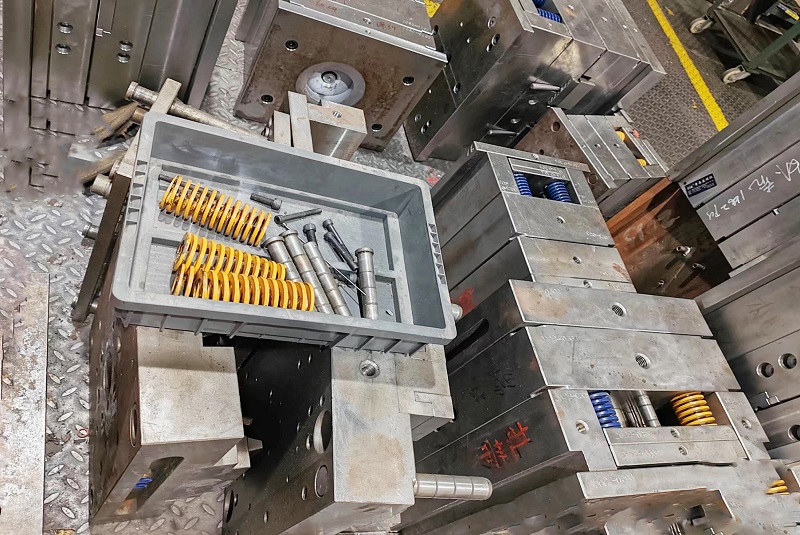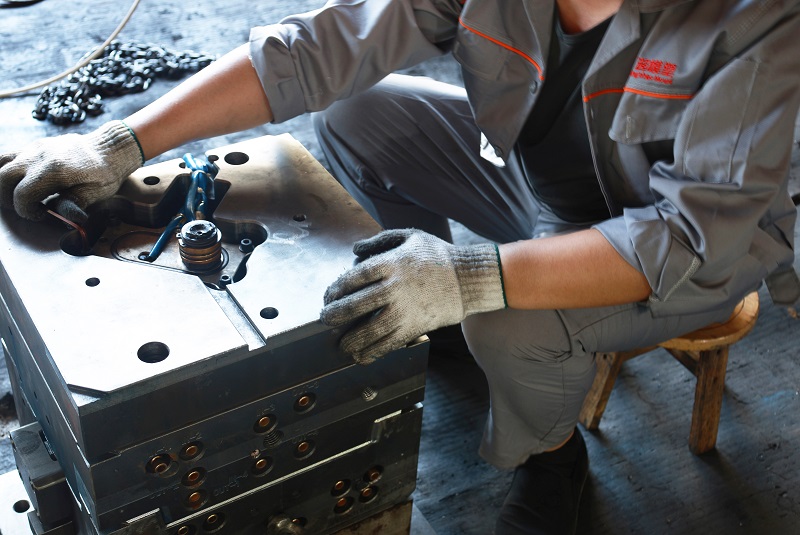Views: 0 Author: Site Editor Publish Time: 2025-02-07 Origin: Site











Plastic injection molding is a manufacturing process that has been around for decades, but it has undergone significant advancements in recent years. This process transforms design into functional products by creating high-quality, precise, and durable plastic parts. In this article, we will explore how plastic injection molding works, its benefits, and its applications in various industries.

The plastic injection molding process involves several steps, including designing the mold, preparing the plastic material, injecting the plastic into the mold, cooling, and finishing.
The first step in the plastic injection molding process is designing the mold. A mold is a hollowed-out block made of steel or aluminum that is used to create the shape of the desired product. The design of the mold is critical to the success of the injection molding process, as it determines the size, shape, and features of the final product.
The mold design process involves creating a 3D model of the product using computer-aided design (CAD) software. The mold is then machined to the exact specifications of the 3D model. The mold design process can take several weeks, depending on the complexity of the product.
Once the mold is designed, the next step is to prepare the plastic material. Plastic resins are available in various forms, including pellets, powders, and liquids. The type of plastic material used depends on the desired properties of the final product.
The plastic material is then heated to a molten state using a hopper dryer and an injection molding machine. The temperature and pressure of the plastic material are carefully controlled to ensure consistent quality and uniformity.
After the plastic material is prepared, it is injected into the mold using an injection molding machine. The machine consists of a hopper, a screw, a barrel, and a clamping unit. The plastic material is fed into the hopper, where it is melted by the screw and injected into the mold through a nozzle.
The injection process is rapid and can take only a few seconds. The pressure and temperature of the plastic material are carefully controlled to ensure that it fills the mold cavity completely and evenly.
After the plastic is injected into the mold, it is allowed to cool and solidify. The cooling process can take several minutes, depending on the thickness of the product and the type of plastic material used. Cooling channels are incorporated into the mold to facilitate the cooling process.
Once the plastic has cooled and solidified, the mold is opened, and the product is ejected. The product may require additional finishing processes, such as trimming, painting, or assembly, to achieve the desired specifications.
Plastic injection molding offers several benefits, including high precision, efficiency, versatility, and cost-effectiveness.
Plastic injection molding is known for its high precision and accuracy. The process involves creating a mold that is an exact replica of the desired product. This ensures that the final product is consistent in size, shape, and features.
The injection molding process is highly efficient and can produce large quantities of plastic parts in a short amount of time. The process is automated, which reduces the need for manual labor and increases production speed.
Plastic injection molding is a versatile process that can be used to create a wide range of products, from small components to large parts. The process can be used with various materials, including thermoplastics, thermosets, and elastomers.
Plastic injection molding is a cost-effective manufacturing process. The initial cost of creating a mold can be high, but the cost per unit decreases significantly with larger production runs. The process also reduces material waste and increases production efficiency, further reducing costs.
Plastic injection molding is used in various industries, including automotive, consumer electronics, medical devices, and packaging.
In the automotive industry, plastic injection molding is used to create parts such as dashboards, door panels, and bumpers. The process allows for the creation of lightweight, durable, and cost-effective parts that meet the strict requirements of the automotive industry.
Plastic injection molding is widely used in the consumer electronics industry to create products such as phone cases, laptop shells, and television housings. The process allows for the creation of complex shapes and features, such as buttons and vents, that are essential for the functionality of these products.
In the medical device industry, plastic injection molding is used to create components such as syringes, catheters, and surgical instruments. The process allows for the creation of precise, sterile, and biocompatible parts that meet the strict requirements of the medical industry.
Plastic injection molding is used in the packaging industry to create products such as bottles, caps, and containers. The process allows for the creation of lightweight, durable, and cost-effective packaging that meets the requirements of various industries.

Recent Innovations in Plastic Injection Molding
Recent technological advancements have further enhanced the capabilities of plastic injection molding, leading to more efficient and sustainable manufacturing processes.
1. 3D Printed Metal Mold Inserts
The integration of 3D printing technology has enabled the production of metal mold and die inserts, reducing lead times and costs associated with traditional tooling methods.
2. Electric Injection Molding Machines
The shift towards 100% electric injection molding machines has resulted in improved energy efficiency, precision, and environmental sustainability. These machines offer significant energy savings and reduced CO₂ emissions compared to traditional hydraulic systems.
3. Conformal Cooling Channels
The development of conformal cooling channels, which follow the shape of the mold cavity, has enhanced cooling efficiency, reduced cycle times, and improved part quality. This innovation allows for more complex and precise designs.
4. Thin-Wall Injection Molding
Advancements in thin-wall injection molding have enabled the production of lightweight and cost-effective parts with wall thicknesses as low as 0.025 inches (0.62 mm). This technique is particularly beneficial for industries such as packaging and automotive.
5. Multi-Material Injection Molding
The ability to mold two or more different materials into a single part simultaneously has expanded design possibilities, allowing for parts with varying properties and reduced assembly requirements.
Plastic injection molding is a versatile and cost-effective manufacturing process that transforms design into functional products. The process offers several benefits, including high precision, efficiency, versatility, and cost-effectiveness. Plastic injection molding is used in various industries, including automotive, consumer electronics, medical devices, and packaging. As technology continues to advance, plastic injection molding will remain a crucial process for transforming design into functional products.
